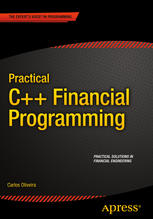

Most ebook files are in PDF format, so you can easily read them using various software such as Foxit Reader or directly on the Google Chrome browser.
Some ebook files are released by publishers in other formats such as .awz, .mobi, .epub, .fb2, etc. You may need to install specific software to read these formats on mobile/PC, such as Calibre.
Please read the tutorial at this link: https://ebookbell.com/faq
We offer FREE conversion to the popular formats you request; however, this may take some time. Therefore, right after payment, please email us, and we will try to provide the service as quickly as possible.
For some exceptional file formats or broken links (if any), please refrain from opening any disputes. Instead, email us first, and we will try to assist within a maximum of 6 hours.
EbookBell Team

5.0
18 reviewsPractical C++ Financial Programming is a hands-on book for programmers wanting to apply C++ to programming problems in the financial industry. The book explains those aspects of the language that are more frequently used in writing financial software, including the STL, templates, and various numerical libraries. The book also describes many of the important problems in financial engineering that are part of the day-to-day work of financial programmers in large investment banks and hedge funds. The author has extensive experience in the New York City financial industry that is now distilled into this handy guide.
Focus is on providing working solutions for common programming problems. Examples are plentiful and provide value in the form of ready-to-use solutions that you can immediately apply in your day-to-day work. Youll learn to design efficient, numerical classes for use in finance, as well as to use those classes provided by Boost and other libraries. Youll see examples of matrix manipulations, curve fitting, histogram generation, numerical integration, and differential equation analysis, and youll learn how all these techniques can be applied to some of the most common areas of financial software development. These areas include performance price forecasting, optimizing investment portfolios, and more. The book style is quick and to-the-point, delivering a refreshing view of what one needs to master in order to thrive as a C++ programmer in the financial industry.